Content
- Video review
- Specifications
- Appearance and equipment
- Software
security
- Cameras
- Performance and Benchmarks
- findings
Popular line of Xiaomi Redmi Note smartphonesI got to version 12 this year! Today we invite you to take a closer look at the Redmi Note 12 and Redmi Note 12 Pro+ models. At first glance, both smartphones offer pleasant characteristics for a reasonable price, but where are the nuances hidden? We will find out further in the text.
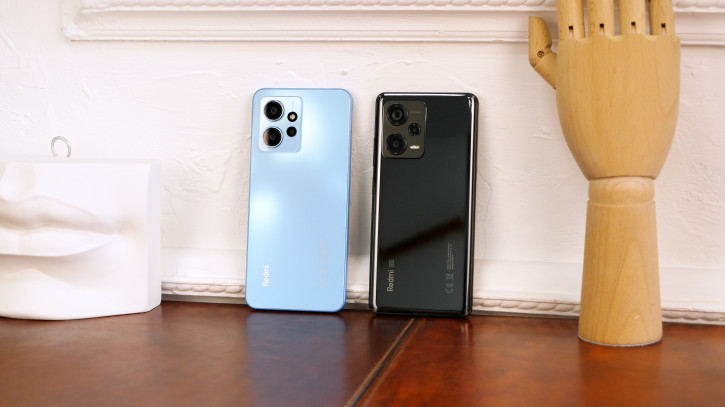
Video review
Technical characteristics
 |
Specifications | |
|---|---|---|
| Redmi Note 12 | Redmi Note 12 Pro+ | |
| Network | 2G, 3G, 4G, 5G | |
| Firmware | MIUI 14 based on Android 12 | MIUI 14 based on Android 13 |
| Screen | 6.7″, 2400 x 1080 pixels, AMOLED DotDisplay, 120 Hz, touch 240 Hz, 1200 nits (peak), DCI-P3 | 6.7″, 2400 x 1080 pixels, Flow AMOLED, 120 Hz, touch 240 Hz, 900 nits (peak), DCI-P3, Corning Gorilla Glass 5 |
| Chipset | Snapdragon 685 (6nm) Adreno 610 |
MediaTek Dimensity 1080 (6nm) GPU: Mali-G68 |
| Ram | 4/6 GB LPDDR4X |
8 GB LPDDR4X |
| ROM | 128 GB UFS 2.2 |
256 GB UFS 2.2 |
| SIM and memory card | 2× nanoSIM + memory card (up to 1 TB) | 2× nanoSIM |
| Camera | Main: Samsung JN1, 50 (→12.5) MP, f/1.8, 1/2.76″ Ultra Wide: OV08D, 8MP, f/2.2, FF, 120° Macro: 2MP |
Main: Samsung S5KH1, 200 (→12.5) MP, f/1.65, 1/1.4″, OIS Ultra Wide: Samsung S5K4H7, 8MP, f/2.2, FF, 119° Macro: 2MP |
| Selfie | 13 MP | OV16A, 16MP |
| Battery | 5000 mAh | |
| Charging | 33 W | 120 W |
| Wireless interfaces | Wi-Fi 802.11a/b/g/n/ac, 2.4/5 GHz Bluetooth 5.0 GPS, GLONASS, Compass, GALILEO IR emitter |
Wi-Fi 802.11a/b/g/n/ac, 2.4/5 GHz Bluetooth 5.2 GPS, GLONASS, BDS, GALILEO IR emitter |
| NFC | there is | |
| Biometrics | Fingerprint scanner in the power button | |
| Sound | Mono 3.5mm jack |
Stereo, Hi-Res 3.5mm jack |
| Water protection | IP53 | IP54 |
| Dimensions and weight | 165.66 x 75.96 x 7.85mm 183.5 g |
162.9 x 76 x 8.98mm 210.5 g |
Appearance and equipment
The equipment package of the devices pleases the usualChinese brands take care of the safety of the device: both boxes contain transparent silicone covers, and the displays are initially covered with protective films. The main difference between the sets is in the chargers: the older model has 120 W charging, while the youngeris content33 W.

In terms of ergonomics, it is difficult to single out a clear leader.On the one hand, Redmi Note 12 Pro + got bevelled corners of the case cover, which is why it lies better in the hands. On the other hand, the older model is 30 grams heavier and much more easily soiled. If you put on covers, then the difference is felt only in weight.

In terms of interfaces and case features, you should pay attention to the following points:
- Both models support 2 nanoSIM SIM cards.
- Only Redmi Note 12 has a memory card slot.
- The older model is equipped with a stereo pair.
- The sound is pleasant, but makes the lid vibrate from 50% volume and above.
- The younger model is content with noticeably less sonorous mono.
- At the top ends are 3.5 mm audio jacks.
- Both models have an IR emitter to control equipment.
- The fingerprint sensors are built into the power buttons. They work smartly and accurately. Vibration feedback from Redmi Note 12 Pro + is closer to the flagship.
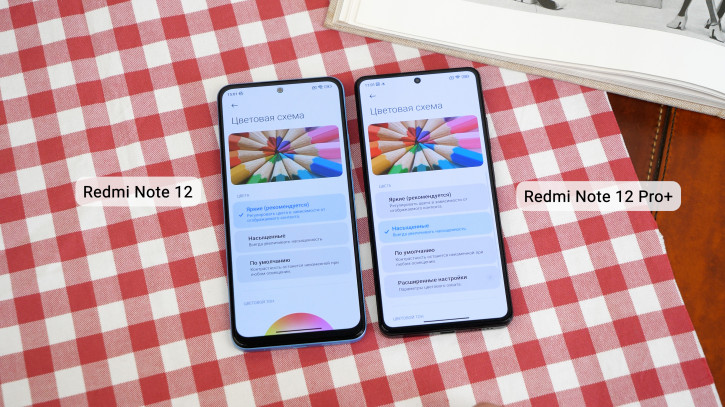
Displays – bright feature of this generation RedmiNote. Both devices use AMOLED matrices with a resolution of 2400 by 1800 pixels, support for a 120 Hz refresh rate and DCI-P3 color space. There are slight differences in the specifications (DotDisplay vs Flow), but in a direct comparison you can only notice a slightly higher maximum brightness of the Redmi Note 12 Pro+.

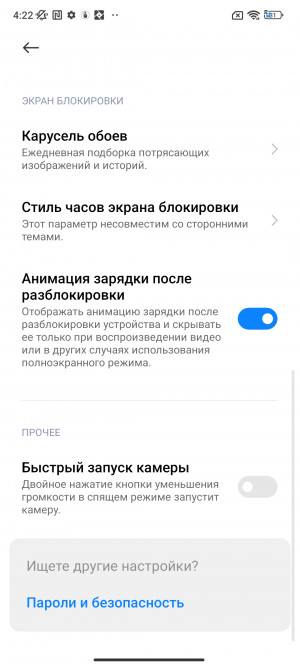

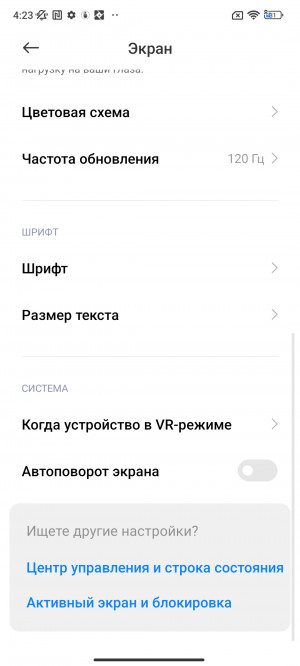
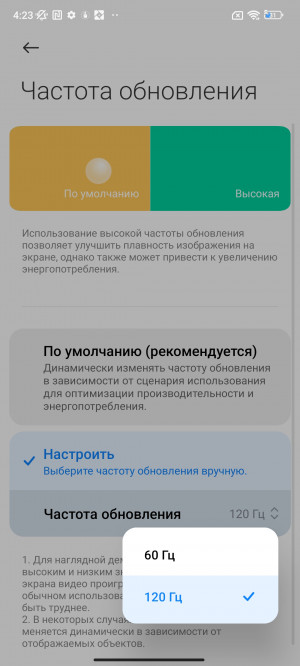
Display settings
Software
Smartphones run on the proprietary MIUI shellversion 14, however there are minor differences. The most noticeable, in my opinion – The older model has performance profiles in the battery settings, as well as a proprietary game launcher. Both of these can influence the performance of the device. The appearance of the shell can be seen in the screenshots below.
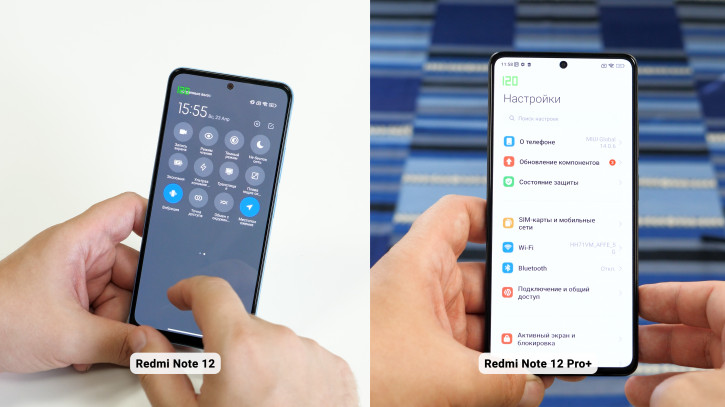

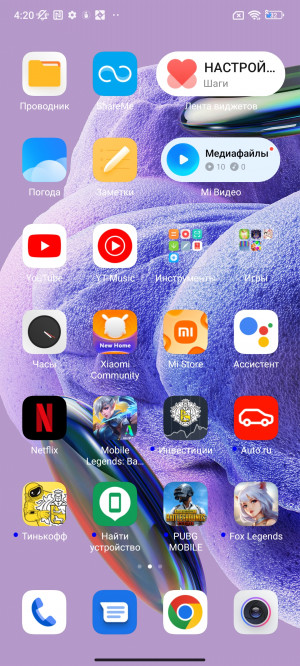
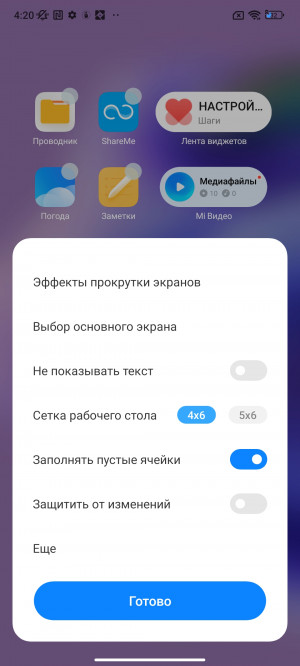

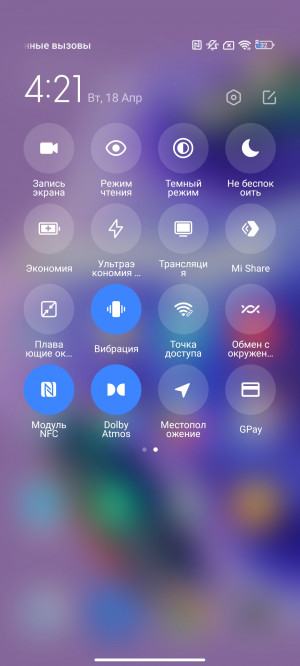
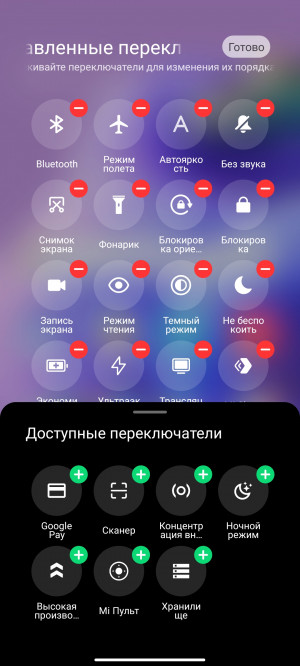
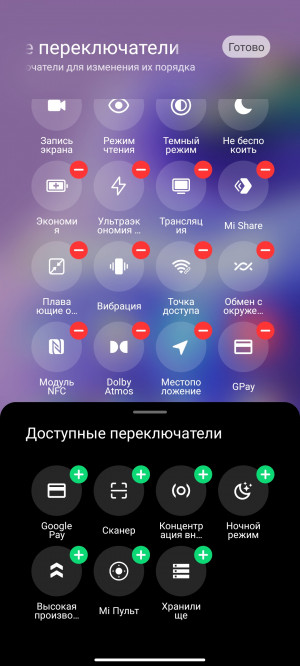
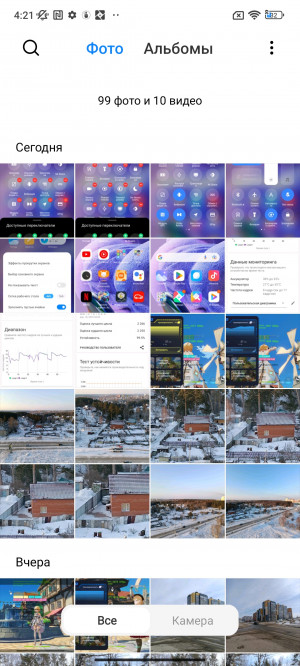

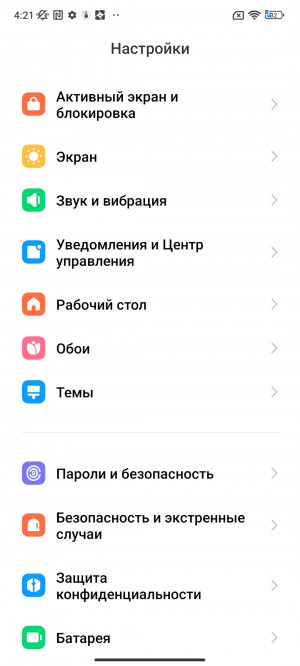

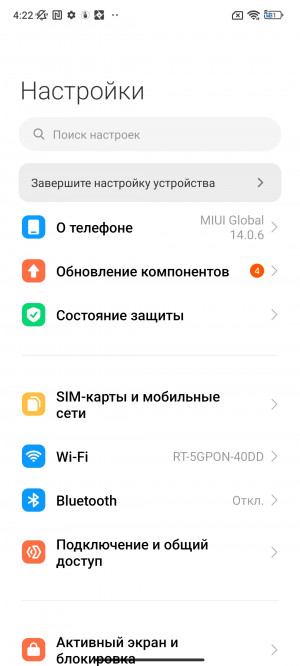
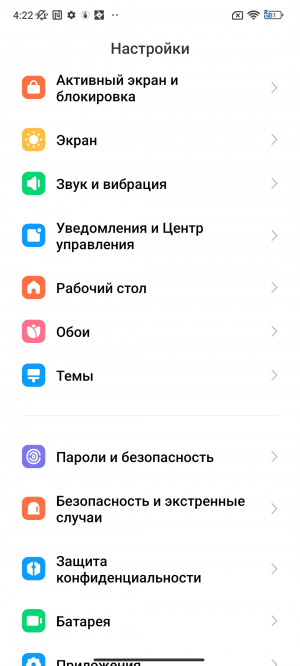
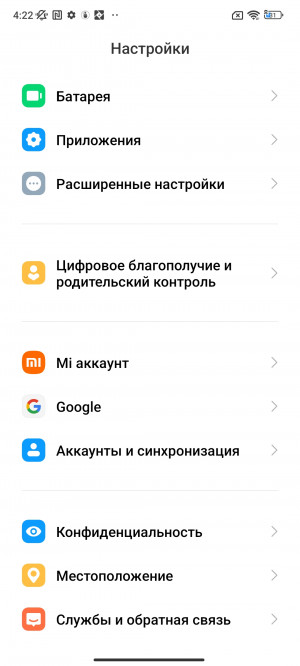
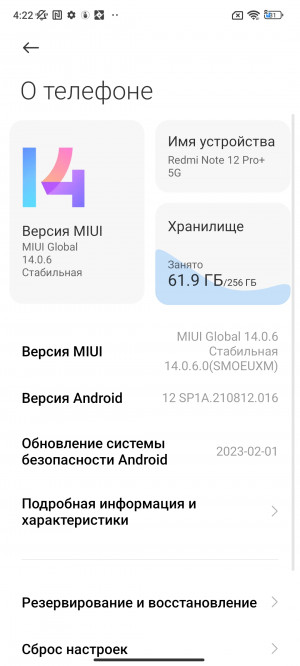

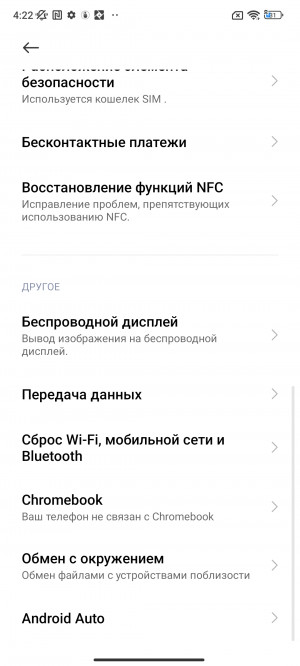
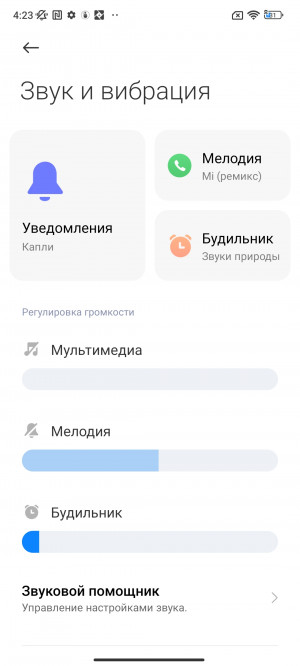
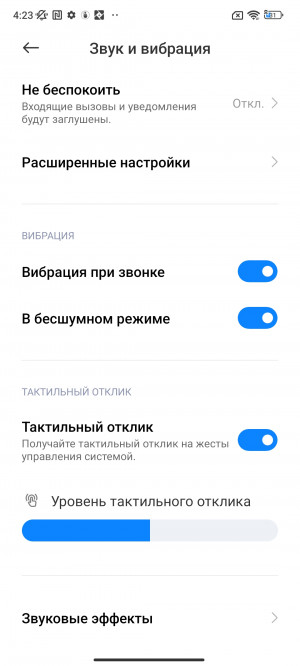
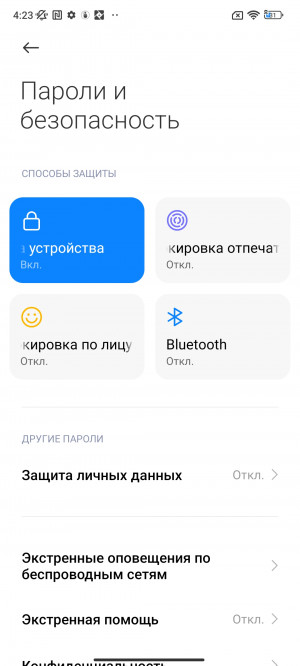
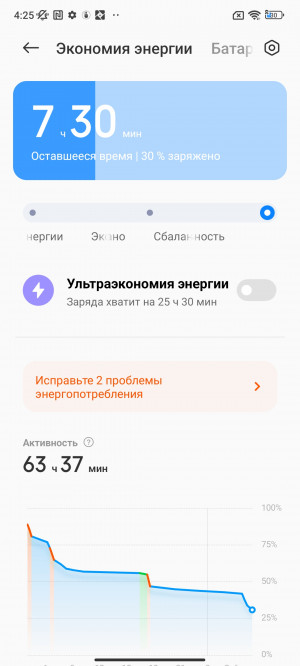

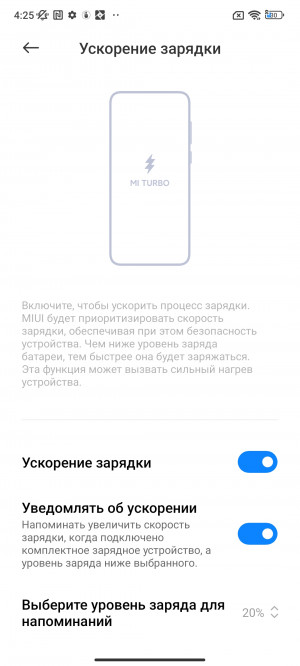
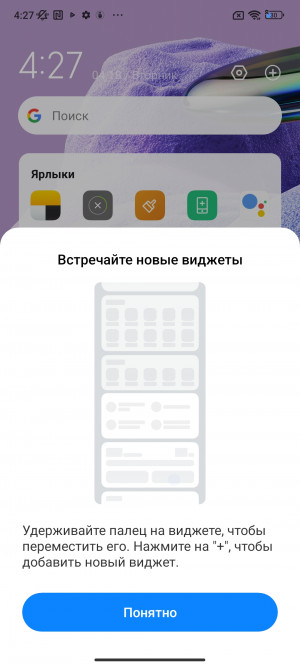
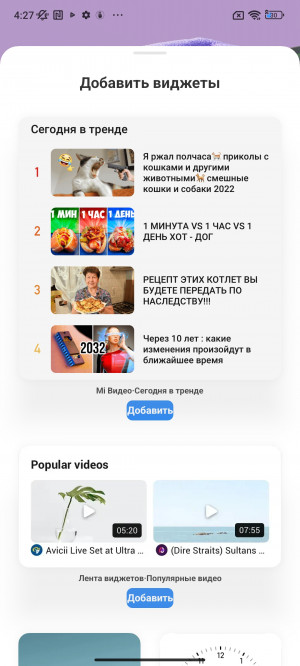
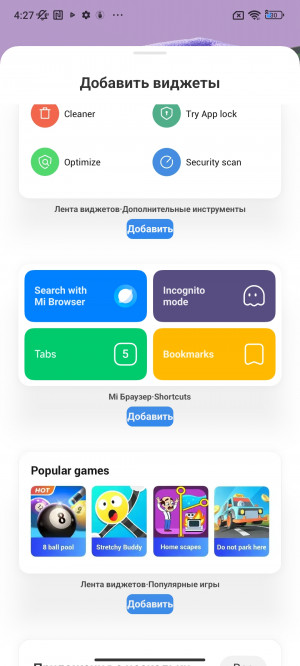
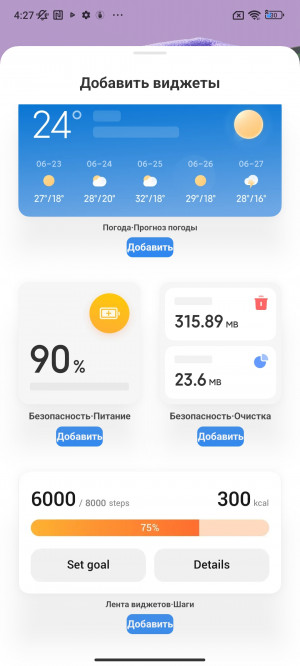
MIUI 14
Cameras
Photo blocks of devices have three cameras –main, wide-angle and macro stopper for quantity. The characteristics of the widths are almost the same, macro doesn’t count, but it’s worth taking a closer look at the differences in the main cameras. Redmi Note 12 has a Samsung JN1 sensor with a resolution of 50 megapixels, an aperture size of f/1.8 and a matrix size of 1/2.76, while the Redmi Note 12 Pro+ has a Samsung S5KH1 with a resolution of 200 megapixels, f/1.65, 1/ 1.4″ and optical stabilization (!).
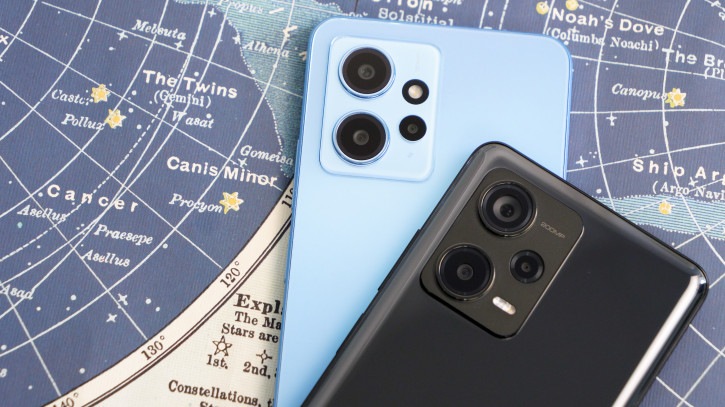
A head-to-head comparison of the main cameras drew attention to the following points:
- Final resolution after binningpixels) in both cases is 12.5 megapixels. When shooting in standard modes, the older model has an advantage in detail, but not to say that it is significant. The difference is much more noticeable in full resolution mode (examples below).
- The footage on the Redmi Note 12 Pro+ is slightly warmer and has a slightly wider dynamic range.
- Both cameras show pleasing results in adequate shooting conditions.
- Redmi Note 12 does not take photos in “Night” on a wide-angle camera.
- Both smartphones demonstrate commendable results, sufficient for everyday household shooting.


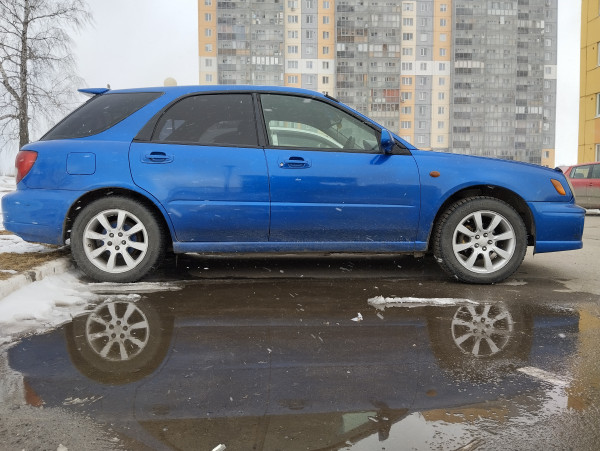

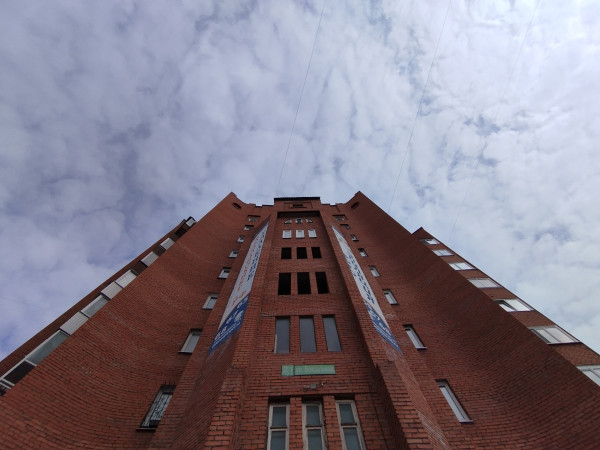
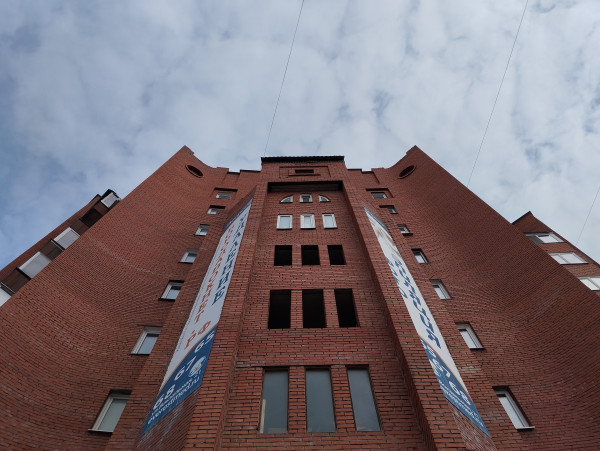

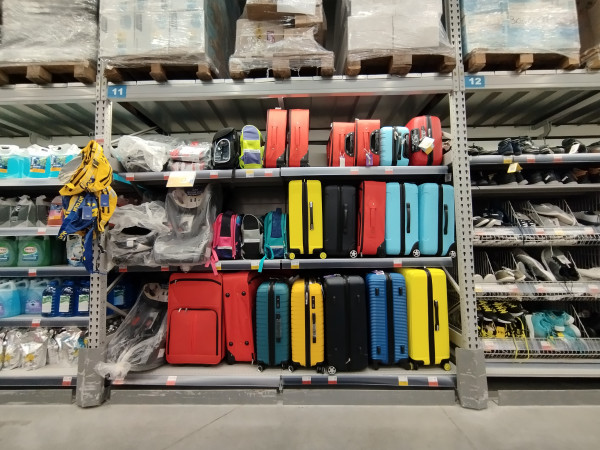


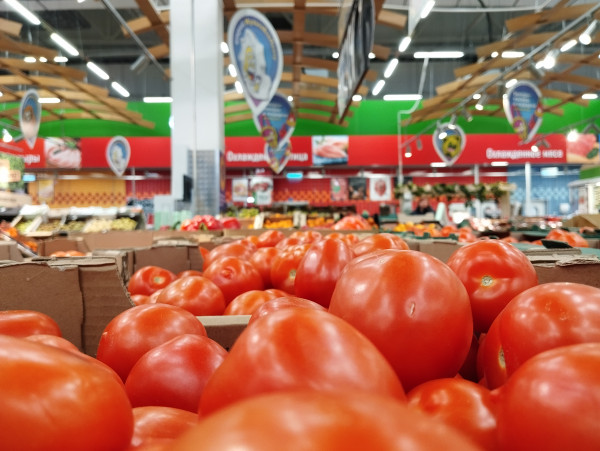




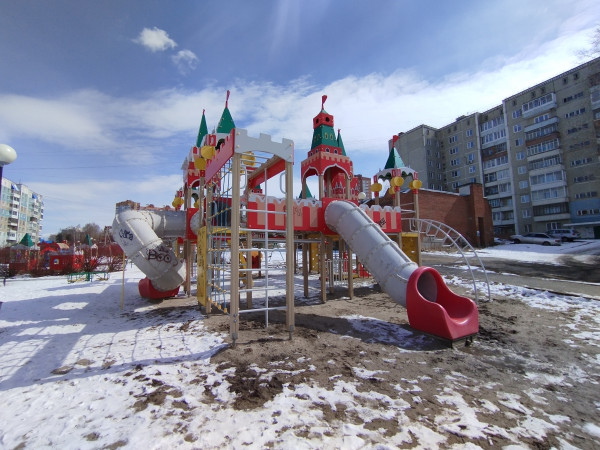
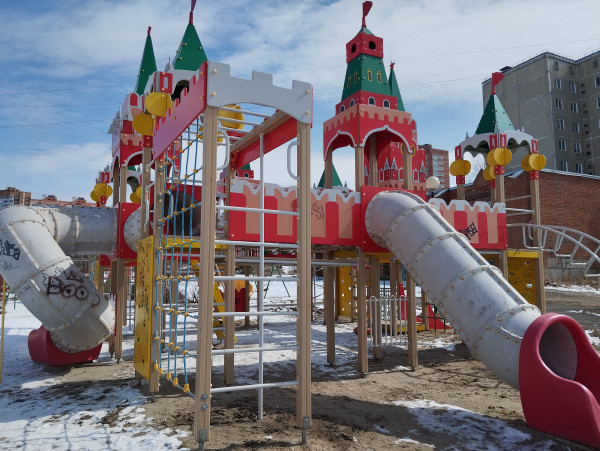


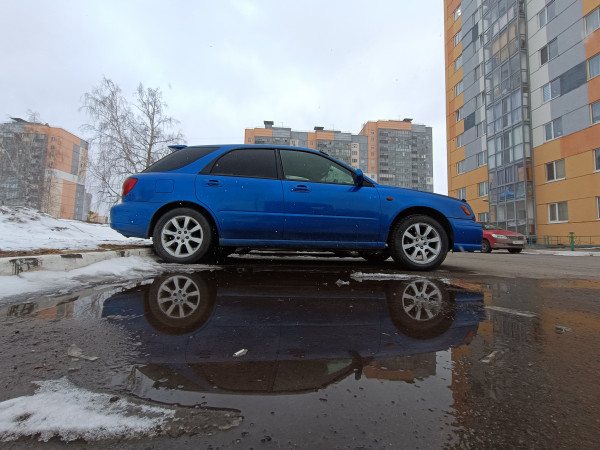

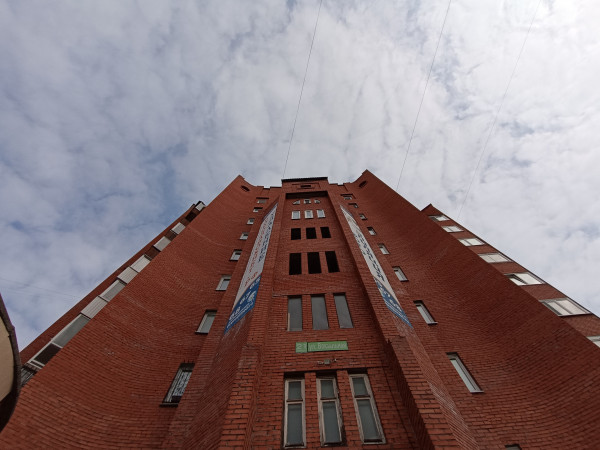
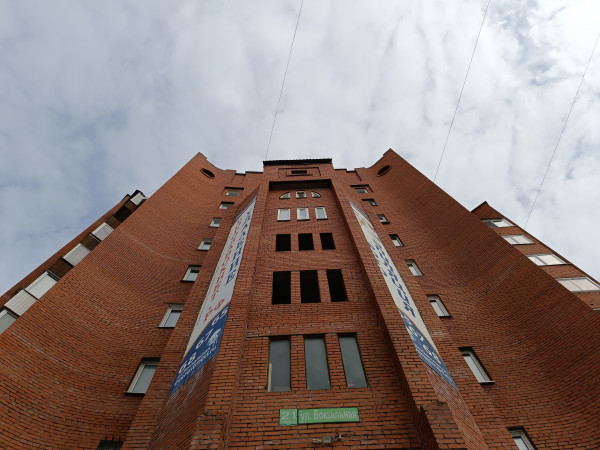


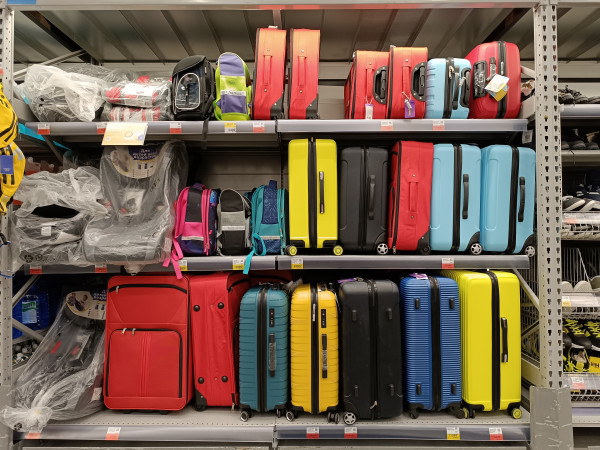



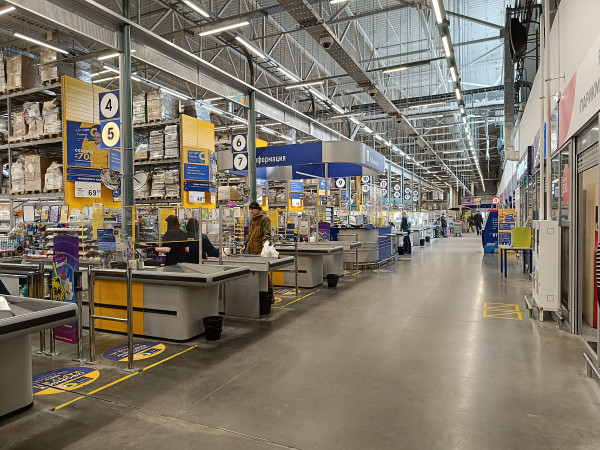

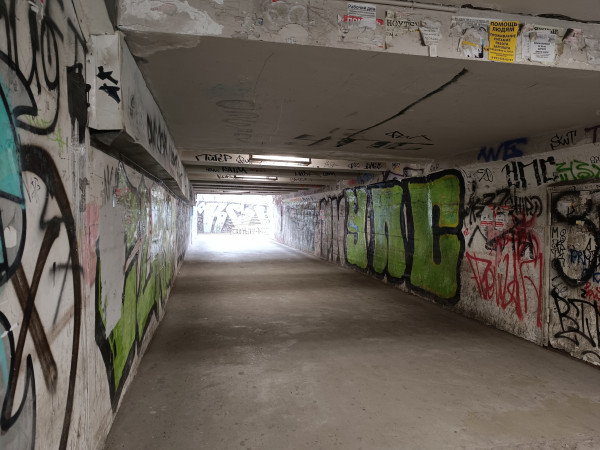
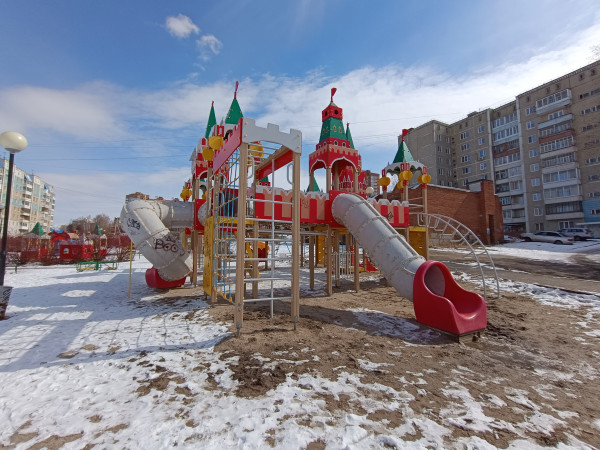
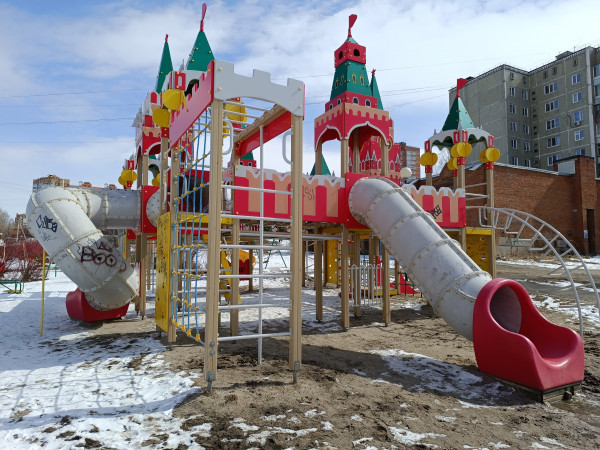
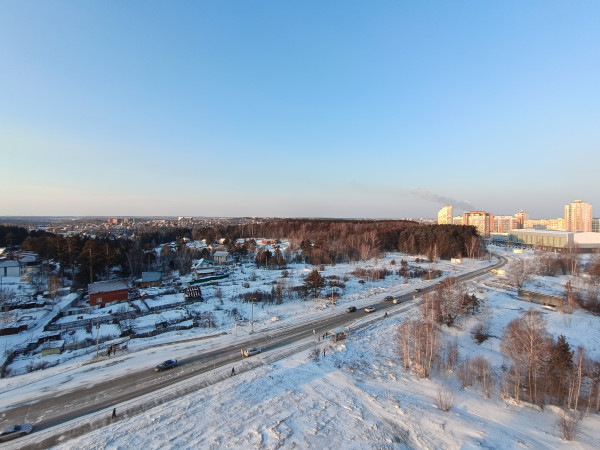

Redmi Note 12: main and wide-angle cameras



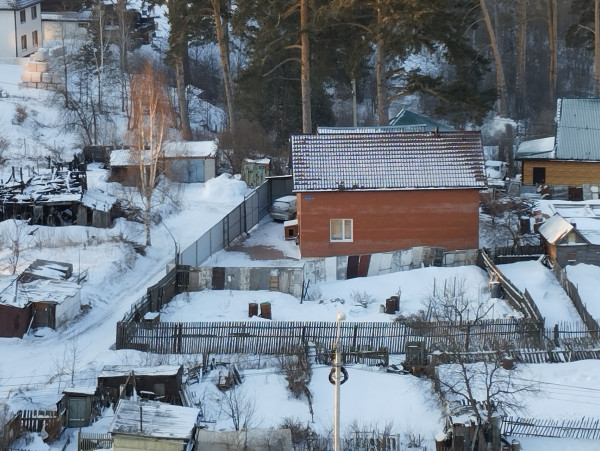


Redmi Note 12: zoom
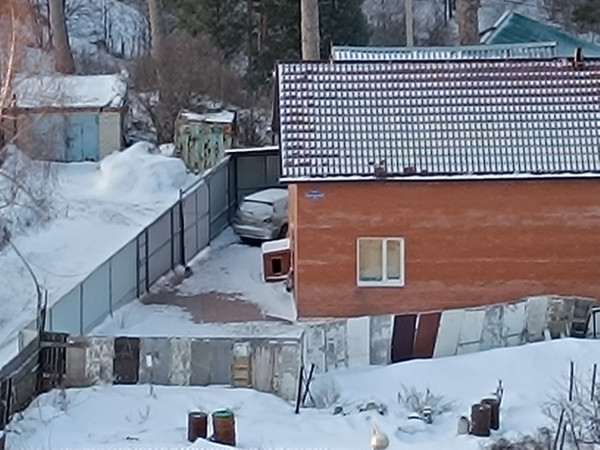

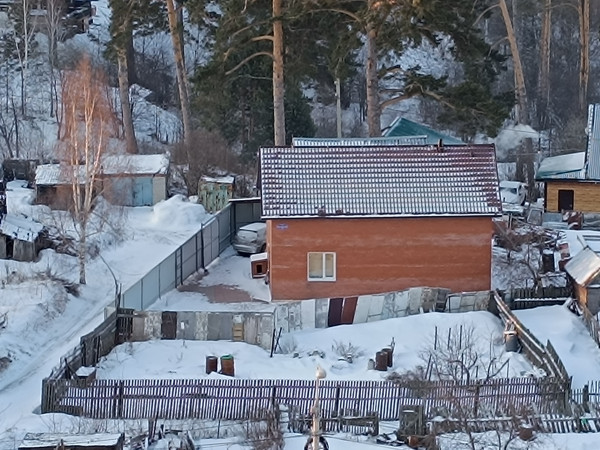
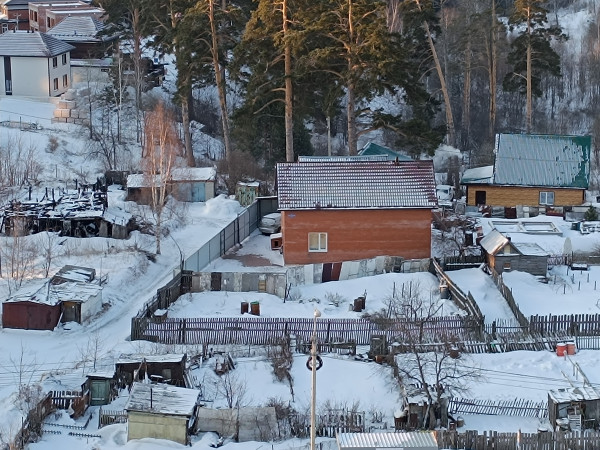
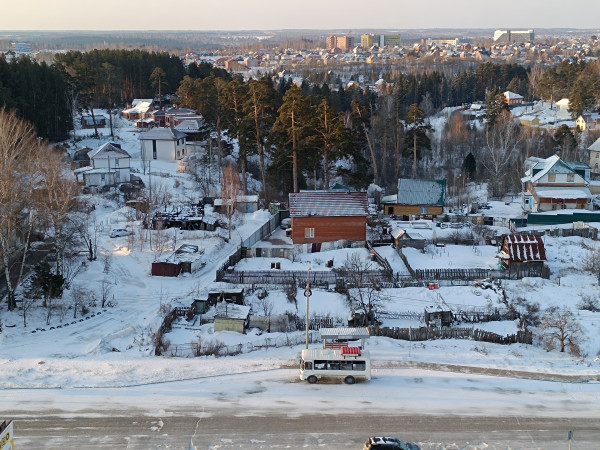
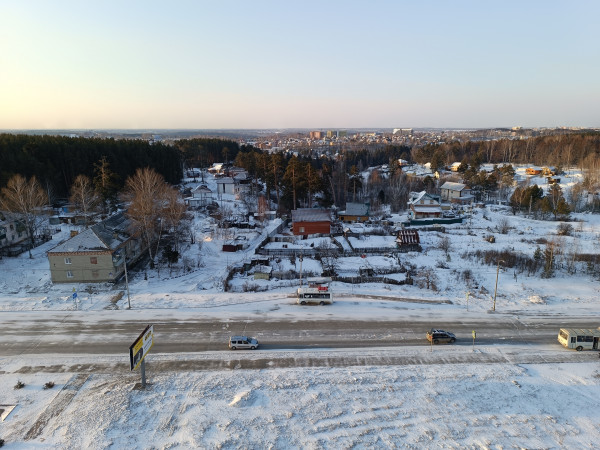
Redmi Note 12 Pro+: Zoom

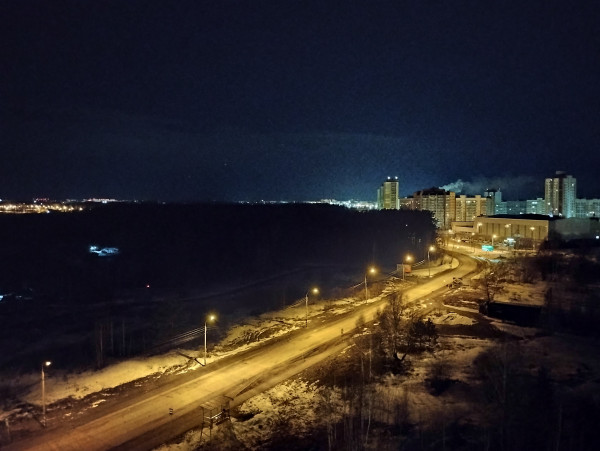
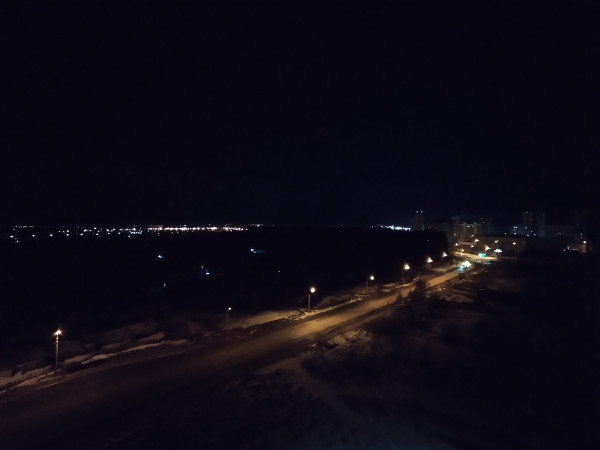


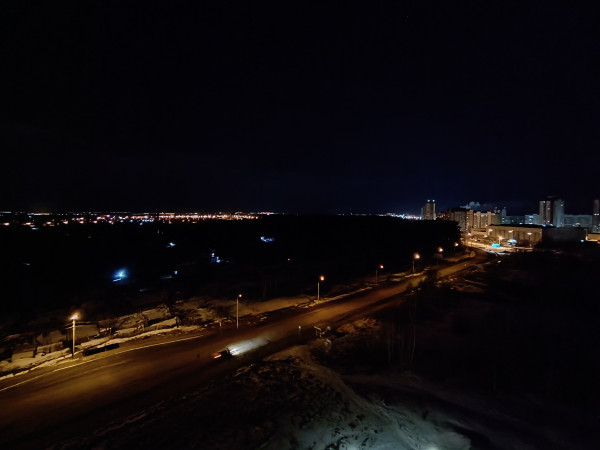
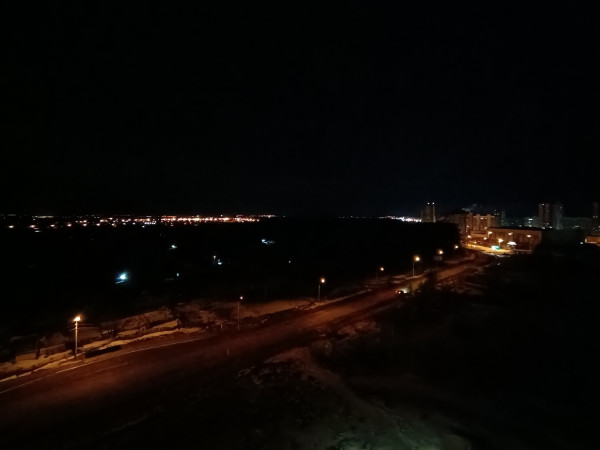
Redmi Note 12 (first 3 frames) & 12 Pro+: standard and night modes




Redmi Note 12 & 12 Pro+: front cameras
In terms of video recording, the differences are much more obvious.The younger model offers 1080p@30fps shooting with jerky indoor lights and noticeable distortion from electronic stabilization. The older one is capable of shooting in 1080p@60fps and 4K@30fps formats with a much more pleasant and smooth picture (it’s not for nothing that an optical stabilization system is installed here). True, you can not switch between cameras during shooting.
Original photos and videos
Performance and tests
Smartphones have sufficient performancefor rendering the interface at smooth 120 Hz, but the differences in power are significant. The entry-level chipset is enough for simple casual games and many competitive projects at moderate graphics settings and without pretensions to high frame rates. The older one shows much more confident results both in synthetic tests and in practice. Although, let's pay tribute to the touch layer, a nimble response at 240 Hz is supported both there and there.
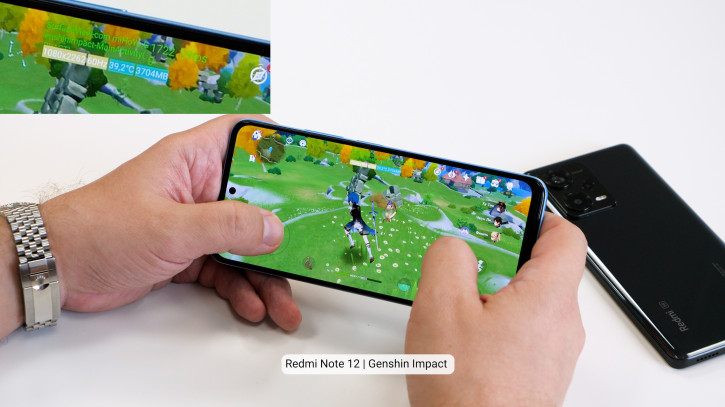
- Redmi Note 12, Tacticool: low graphics settings – 38-45 fps, ultra graphics settings – 38-45 fps.
- Redmi Note 12 Pro+, Tacticool: low graphics settings – 90-110 fps, ultra graphics settings – 70-90 fps.
- Redmi Note 12, Genshin Impact: minimal graphics settings – 35-45 fps, ultra graphics settings – about 20 fps.
- Redmi Note 12 Pro+, Genshin Impact: minimum graphics settings – 29-45 fps, ultra graphics settings – 39-50 fps. Heating up to 43 degrees.
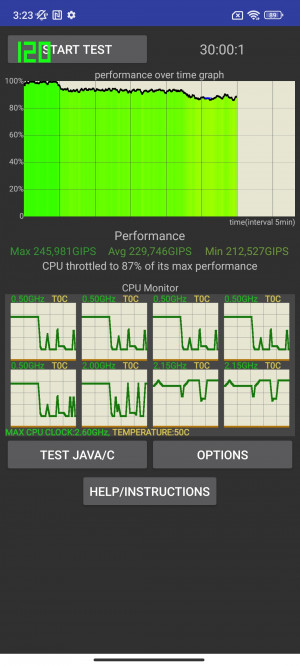
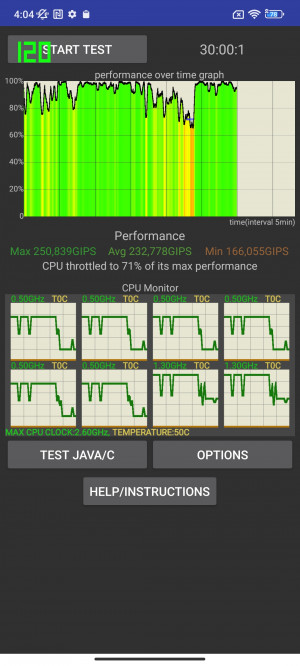
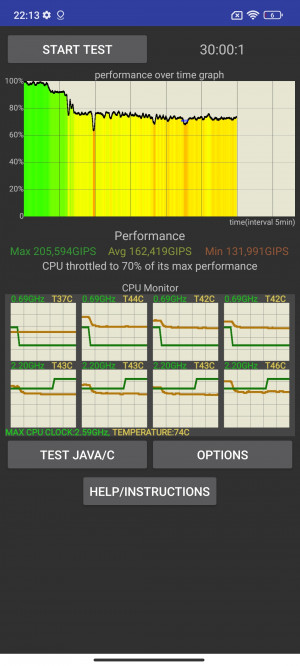
CPU throttling test*
*Screenshot order:
- Redmi Note 12 Redmi Note 12 Pro+: Standard Mode
- Redmi Note 12 Pro+: performance (battery)
- Redmi Note 12 Pro +: performance (battery) + game launcher
</i>
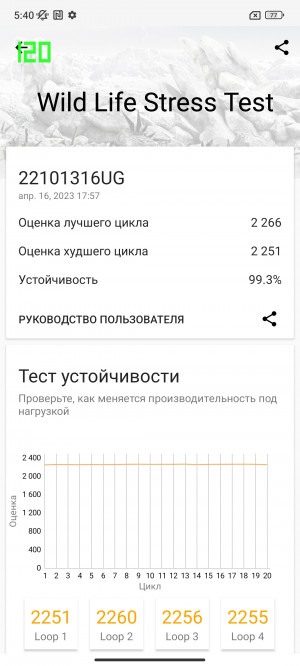
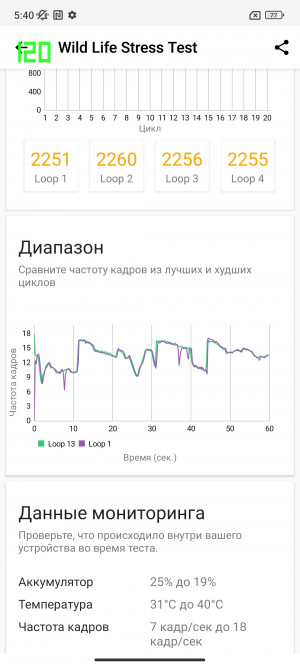
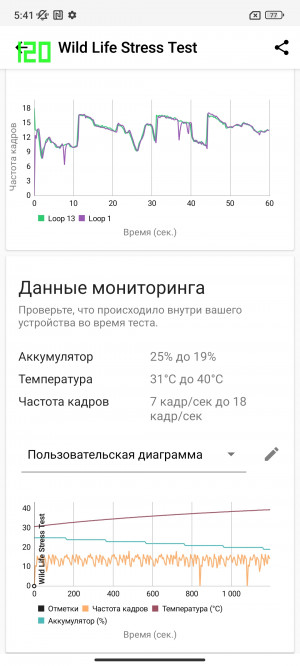
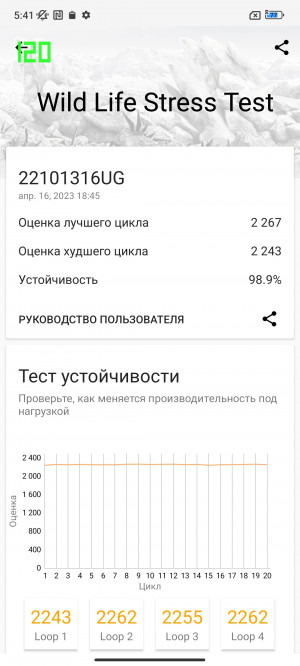
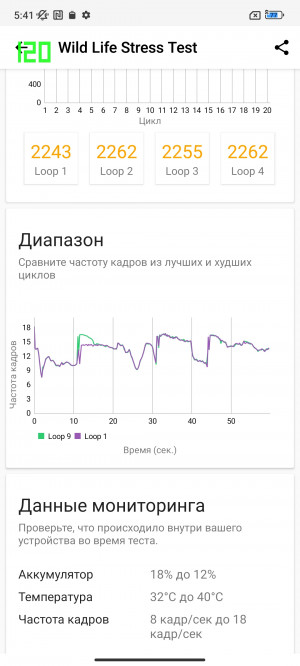
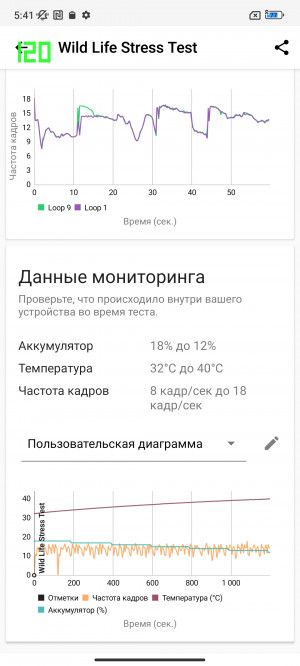
3DMark Graphical Stress Test (failed to run on Redmi Note 12)
Capacious 5000 mAh batteries are responsible for the autonomy of the devices. The discharge rate depends on the usage scenario, but you can focus on the following numbers:
- 60 minutes YouTube (WiFi, 50% brightness): 8% charge in both cases.
- 30 minutes Genshin Impact (WiFi, 50% brightness, low graphics settings):
- Redmi Note 12: 8%
- Redmi Note 12 Pro+: 10%
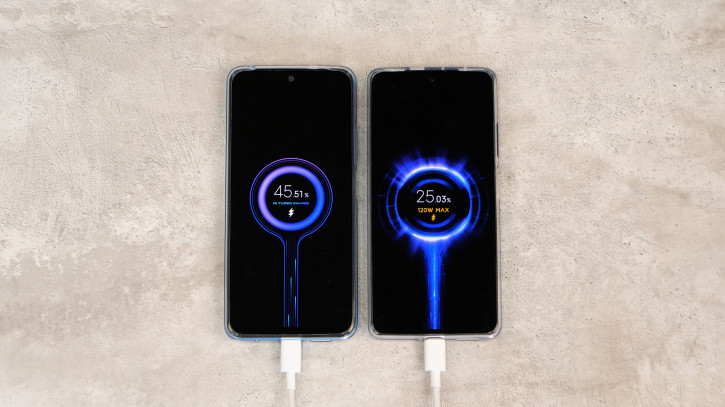
The charging speed differs almost twice:
- Redmi Note 12: 5 – 8%, 15 – 27%, 30 – 50%, 45 – 74%, 60 – 96%, 67 minutes – 100%.
- Redmi Note 12 Pro+: 5 – 13%, 15 – 56%%, 30 minutes – 100%.
Conclusions
Smartphones Xiaomi Redmi Note 12 and Redmi Note 12Pro + left a good impression. Both devices delight with excellent displays, rich bundles, fast chargers, solid autonomy, the presence of a popular 3.5 mm audio jack and good photo capabilities. The younger model can be recommended for a wide range of users, while the older one is suitable for those who put forward slightly higher requirements for video recording and performance.
New Redmi Note
and gifts in MTS
© Dmitry Pivnev.